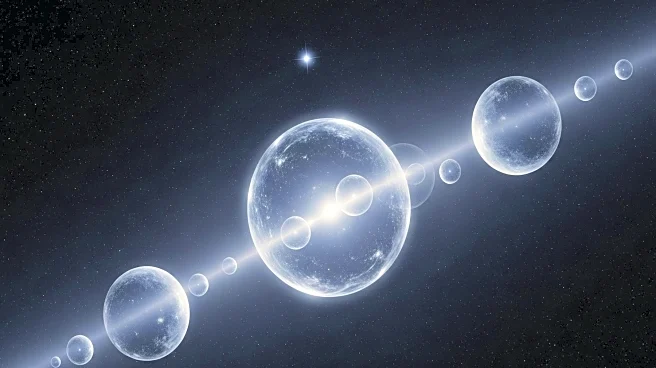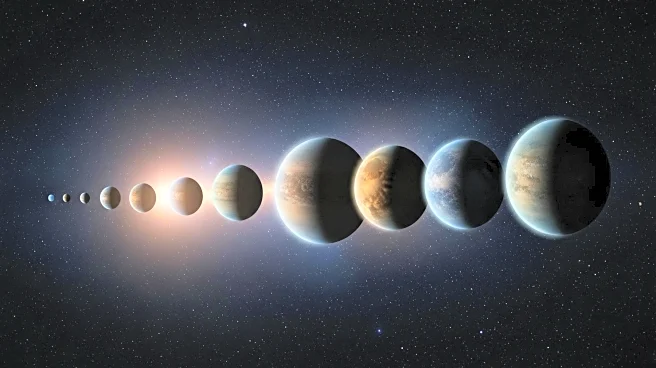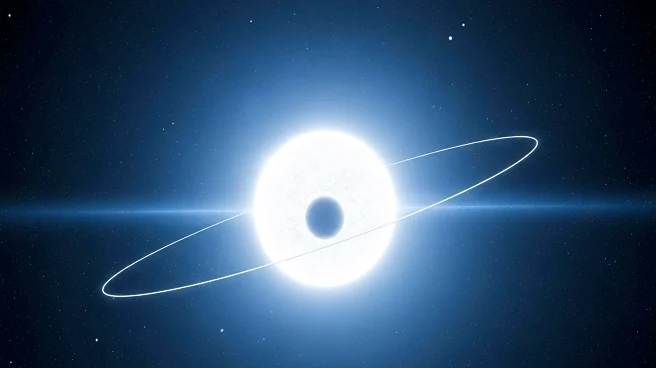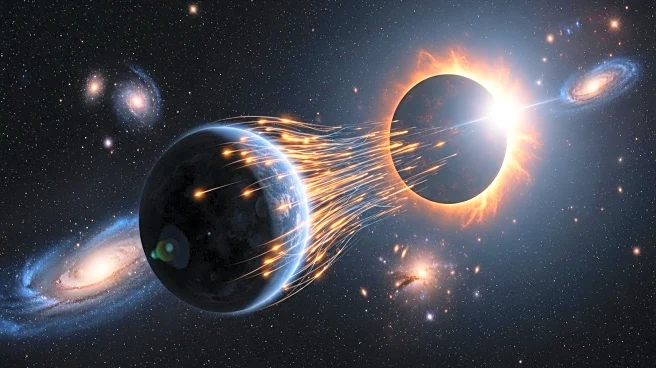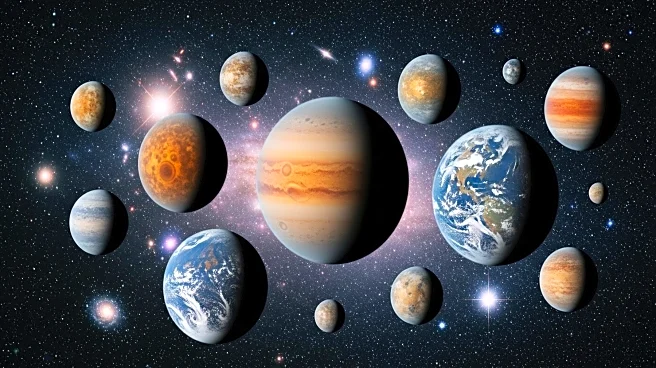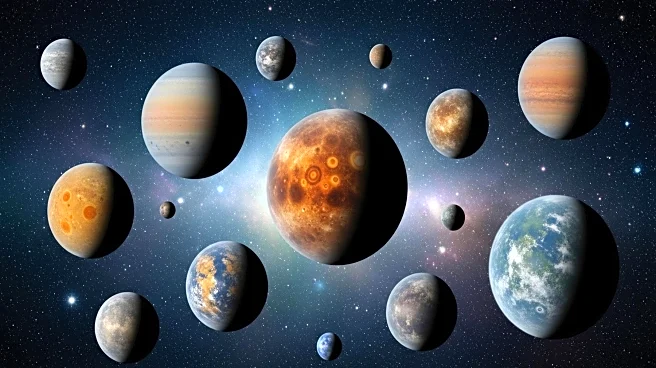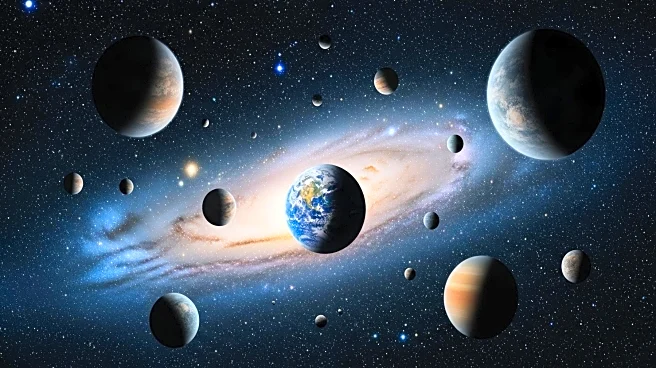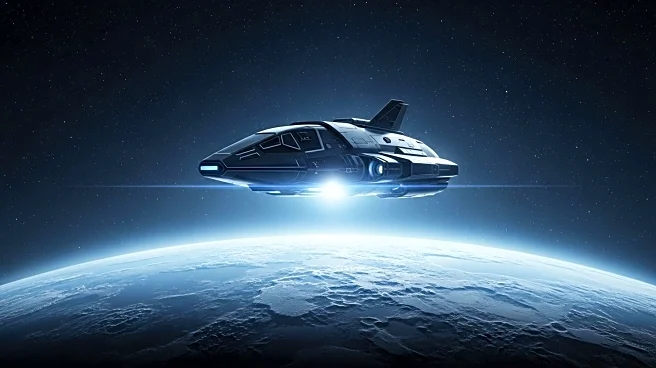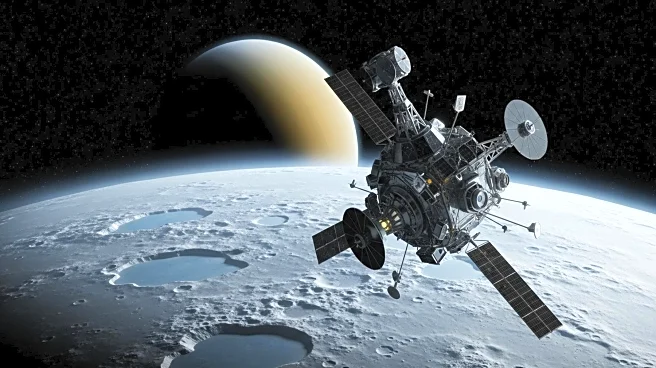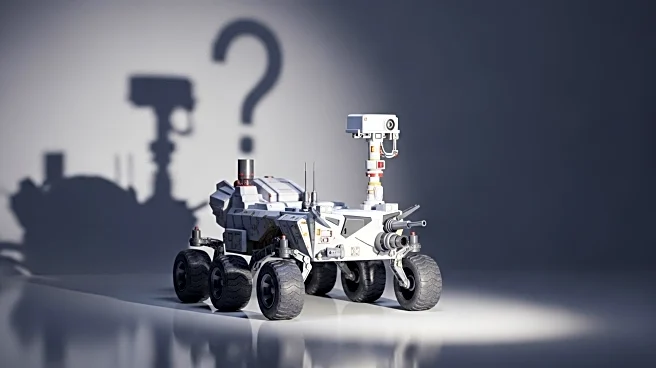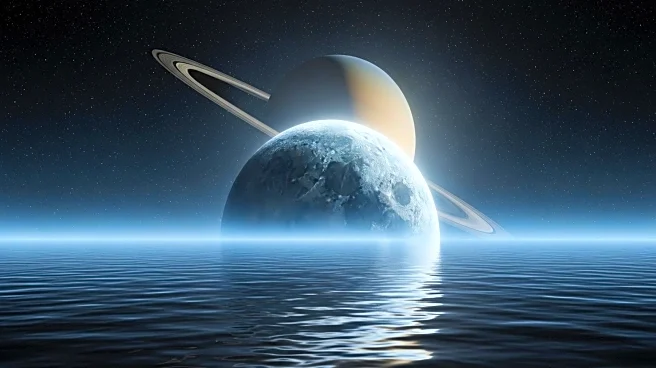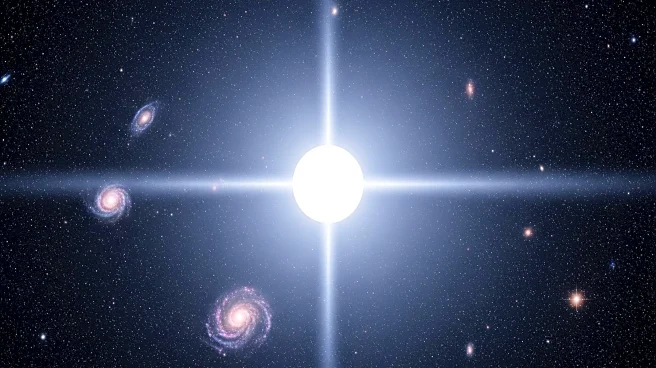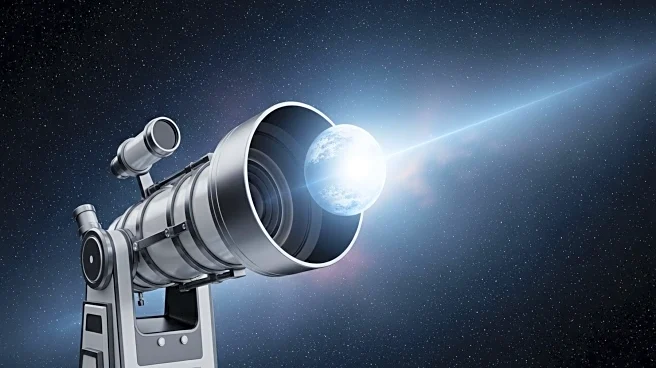What is the story about?
What's Happening?
NASA has officially confirmed the existence of 6,000 exoplanets beyond our solar system, marking a significant milestone in space exploration. These planets vary in size and composition, with some resembling Earth and others being massive gas giants. The discovery is the result of decades of research and observation using NASA's powerful telescopes. An additional 8,000 exoplanets are awaiting verification. NASA is developing advanced instruments to block out starlight, which will aid in studying these planets more closely and potentially identifying Earth-like worlds.
Why It's Important?
The confirmation of 6,000 exoplanets represents a major advancement in our understanding of the universe and the potential for finding life beyond Earth. This discovery could reshape scientific theories about planet formation and the prevalence of Earth-like planets. The development of new instruments to study these exoplanets may lead to breakthroughs in identifying habitable environments and understanding the conditions necessary for life. The findings have implications for future space missions and the search for extraterrestrial life, potentially influencing public interest and funding for space exploration.
What's Next?
NASA plans to focus on exoplanets most similar to Earth, with upcoming missions aimed at studying these planets in greater detail. The agency is developing tools to block out starlight, which will enhance the chances of discovering planets with conditions suitable for life. These efforts may lead to new insights into the possibility of alien life and the characteristics of habitable planets. The continued exploration of exoplanets will likely drive scientific research and technological innovation, contributing to our understanding of the universe.
AI Generated Content
Do you find this article useful?
